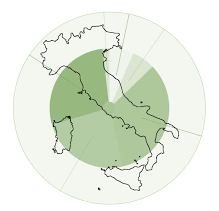On a sunny day in Clearwater, Florida, more than a dozen people gathered in a United Way resource center parking lot, eager to receive free weekly meals offered by the 360 Eats food truck. This truck cooks dishes from food that would otherwise go to waste. That day, attendees could choose from a bowl of chicken with fresh vegetables, pasta salad, and a creamy sauce, or a fish stew with vegetables, creamy granola, and an herb sauce. Among those present, a woman in uniform, fresh from her shift at a nearby hotel, sought shelter from the sun, while a family entertained a lively child while waiting for their meal.
Across the country, in Antioch, California, a long line had formed in front of the Fresh Approach truck, a mobile farmers’ market that brings fresh, affordable produce to East Bay communities. The boxes were filled with lettuce, leeks, mushrooms, and nuts, but the main attraction was the large, seasonal strawberries, which generated great enthusiasm among those in attendance.
These experiences are not just about providing fresh, healthy food, but are part of an innovative project that aims to strengthen the resilience of communities in the fight against food insecurity. Supported by the American Heart Association’s Social Impact Fund, 360 Eats and Fresh Approach are part of an initiative that includes more than 100 programs dedicated to addressing the social determinants of health, improving access to nutritious food in disadvantaged communities and addressing health inequities.
The initiative, launched in 2018 and fully implemented in 2023, aims to fill knowledge gaps related to food insecurity. Although community-based programs have an immediate impact on people’s lives, a full understanding of their long-term effect on beneficiaries’ health is still lacking. A major challenge is the lack of adequate resources and tools to effectively monitor and evaluate the outcomes of such interventions.
A simple yet innovative solution is to ask participants direct questions about their fruit and vegetable consumption, as this is closely linked to better cardiovascular health. This approach, although elementary, could provide valuable data, comparable to that collected through national surveys or standardized health metrics. Integrating these questions into daily operations, such as through short surveys while people wait in line for meals, would allow programs to gather crucial information about their clients’ eating habits.
This method proves to be more flexible, efficient and cost-effective than traditional ways of monitoring health impacts, which often require lengthy and complex processes. In addition, directly involving communities in the design and implementation of such assessments ensures that the methods used are relevant and respectful of local needs. Putting community members at the center allows for the creation of tools that better measure the impact of these programs, directing future efforts toward continually improving access to healthy food.
The impact of local communities in the fight against food insecurity
Programs like Growing Together, another local initiative in Richmond, California, confirm the effectiveness of the community approach. Each week, a stall is set up outside an elementary school with boxes of fresh produce at discounted prices. One mother, with two children on each hand, tells how thanks to this initiative her family is eating healthier: “We didn’t used to eat a lot of fruits and vegetables, they were too expensive and I didn’t have time to prepare them. But with the bags of vegetables they sell at school at an affordable price, now my whole family is eating more vegetables and of better quality.”
In the United States, nearly 42 million people, or 12.5 percent of the population, depend on Supplemental Nutrition Assistance Program (SNAP) benefits to purchase groceries. However, in many communities, access to healthy and affordable food remains a challenge. So-called “food swamps,” or areas where cheap but unhealthy food is readily available while healthy food is scarce, are more common in communities with high poverty rates, a higher proportion of people of color, and rural communities. These food disparities exacerbate health inequalities, disproportionately affecting marginalized populations.
A survey of 360 Eats, Fresh Approach, and Growing Together clients revealed that the main barriers to eating healthy foods are high costs (50 percent of respondents), lack of time to prepare meals (23.4 percent), and limited accessibility (19.1 percent). Overcoming these barriers is key to improving health equity and ensuring better access to nutritious foods.
One of the participants in the Fresh Approach program shared her experience, “I like the fact that I don’t have to travel far to wealthier areas to find healthy food. The truck comes directly here, for us who have low incomes, and gives us a variety of fruits and vegetables at a discounted price.”
The challenges of small producers in measuring the impact of their programs
At the heart of these community efforts is an attempt to understand the true impact of programs, both from a policy and funding perspective. It is not just about the number of meals served or pounds of products distributed, but the real changes that occur in the lives of people and their families.
Cameron Macleish, founder and director of 360 Eats, described the difficulties small organizers face in measuring these results. “We have focused primarily on using information to meet grant requirements, rather than in-depth research,” Macleish explained, pointing out the lack of adequate resources to develop a comprehensive data collection system that goes beyond the logistics of distributed food.
The future of community-based research
Initiatives such as 360 Eats, Fresh Approach, and Growing Together demonstrate that it is possible to improve food equity through local programs that not only provide healthy and affordable food, but also strengthen community resilience. These projects, which give people access to healthy meals without further burdening their household budgets, are a step toward greater social and health justice.
This article was written by experts from the Institute for Health Metrics and Evaluation (IHME) to highlight how active involvement of communities can transform access to healthy food, making people protagonists of their own health and well-being. The article was published in Think Global Health as a platform of the Council of Foreigh Relations in which IHME collaborates(About This Site | Think Global Health)

